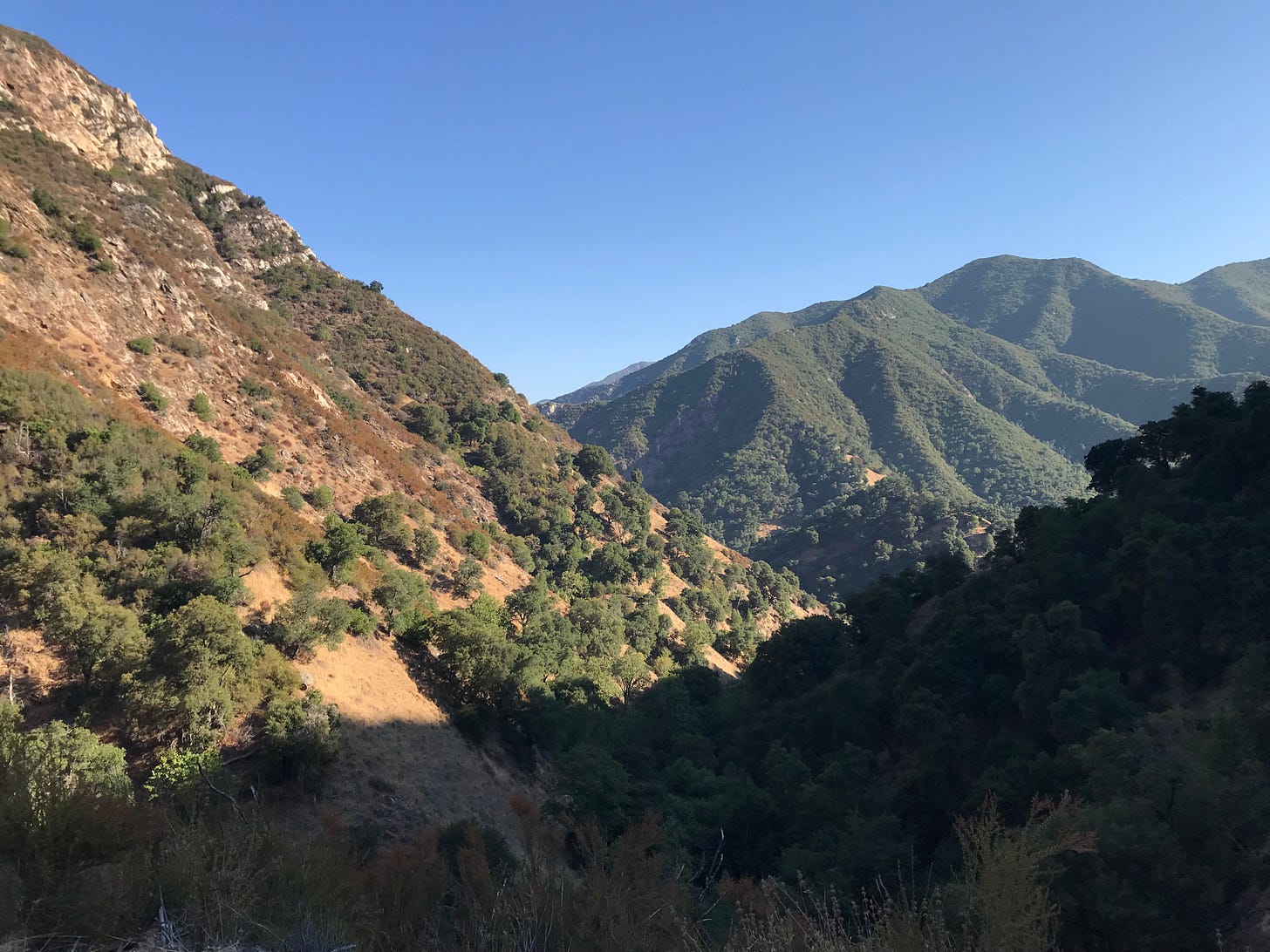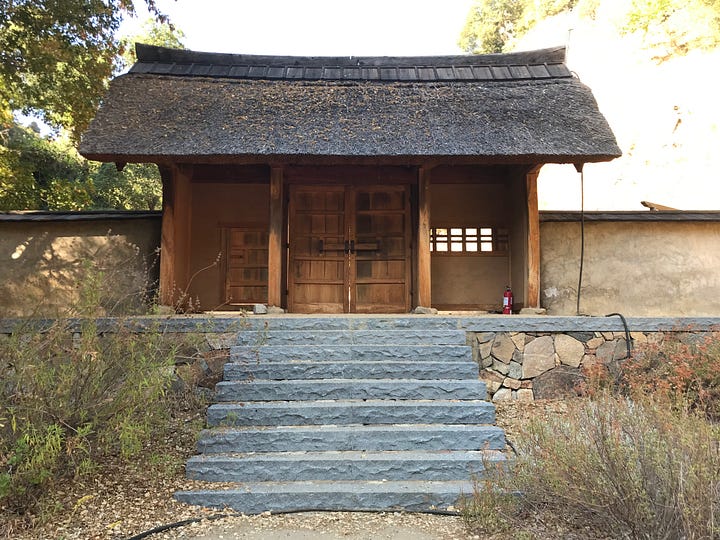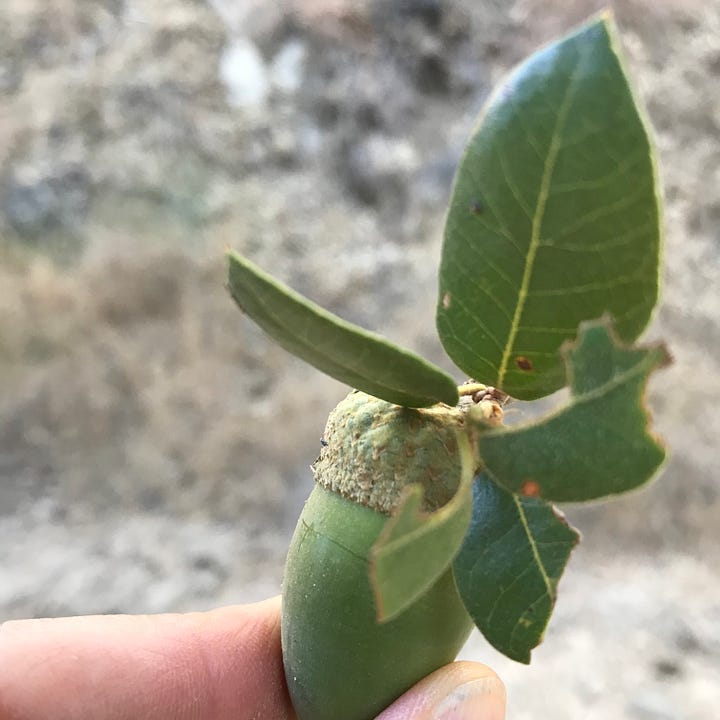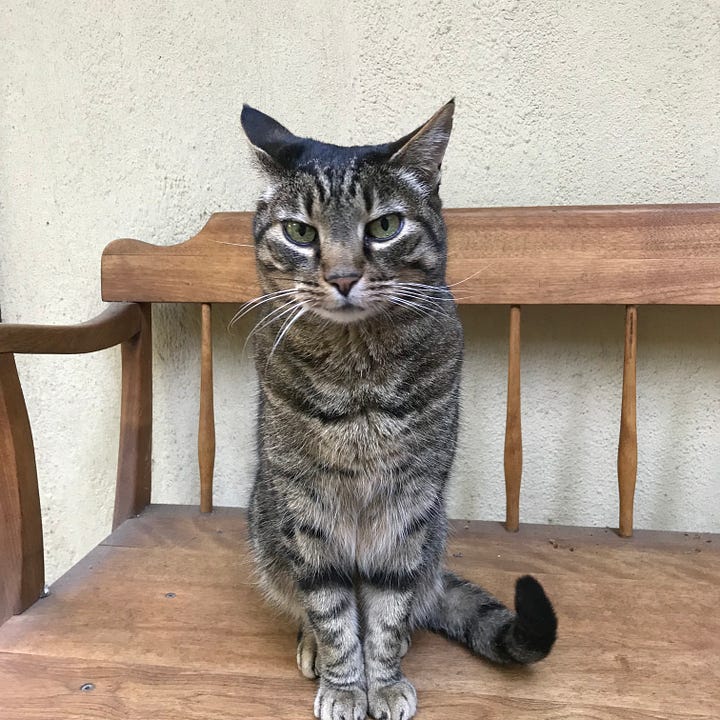
Monday, September 25th, 7:00 AM
Slept in today as it’s my day off; although I just learned from the Abbot that I was supposed to attend the two morning periods of zazen (seated meditation) and oryoki breakfast before having the day off (until evening service and oryoki dinner). I am surprised that I forgot this, but it has been four years since I’ve participated in a practice period here.
Since the morning of Friday, Sept. 22, the head student has run along the path ringing the wake-up bell at 4:30. This will be his responsibility every morning for the entire 90-day practice period (Jap. ango). As head student, he co-leads the ango with the Abbot.
I’m sitting on my bed in my one-room cabin with the gray-blue morning light filtering through the sliding glass door. Outside there’s a small wooden terrace with a wrought-iron fence that overlooks the Tassajara creek—the one continuous sound that resounds through the valley.
I haven’t been in Tassajara since mid-August 2020 when a small band of us were evacuated because wildfires were encroaching on the valley. Fortunately, the fires never got close enough to endanger the monastery and the fire crew who stayed behind to protect it.
To get into Tassajara, you have to traverse a 14-mile dirt road that was dynamited out of an unnamed mountain by unnamed Chinese laborers in the late 1800s. These workers were given meals and only paid $.50 a day for this back-breaking, dangerous work. Before Tassajara was “discovered” by Europeans, the hot springs and surroundings were the home of the indigenous Esselen tribe. A hotel was built in the valley and it became a hot springs resort. While it still serves as the latter during the summer months, during the fall and winter its rustic cabins have housed hundreds of Zen practitioners for the past five decades.
I spent the first day here on the serving crew, which offers meals in the meditation hall to the new students and others who are on different crews. On most days, we eat our three meals in the meditation hall while sitting in zazen posture. These meals are called oryoki, which means “just enough” or “the right amount.’ I love this ceremony of serving others before myself and nourishing the community. Plus it was fun, and a wonderful way to keep warm in the early morning when it feels like early winter.
On my second day, I sat one day of tangaryo, which in Japanese means “room to spend the night.” New students to Tassajara sit five days of tangaryo: meditating all day in the meditation hall from 5 AM until 8:30 PM. The rest of the community sits with them in the morning and the evening and for oryoki breakfast and dinner. Of course they’re allowed to leave for bio breaks throughout the day and they have a 30-minute break after each meal.
New students sit tangaryo in the zendo, though in ancient times they sat outside the monastery gate, to prove their determination in wanting to study The Way and become a member of the sangha (spiritual community). I don’t know where or when this tradition arose, however, there’s one legend that might have been the origin of this tradition.
When the first Zen/Chan patriarch Bodhidharma (5th or 6th century) was meditating in his cave, Dazu Huike (487–593) appeared outside and implored the great Indian meditation master to take him on as a disciple. Bodhidharma refused him. To prove his great aspiration to study The Great Matter, Huike stood outside all night in the waist-high snow.
When Bodhidharma emerged from the cave in the morning and saw the frigid Huike standing there, he asked him what he was doing. Huike, who became the Second Zen Ancestor, replied that he wanted a teacher to "open the gate of the elixir of universal compassion to liberate all beings."
Bodhidharma refused, saying, "How can you hope for true religion with little virtue, little wisdom, a shallow heart, and an arrogant mind? It would just be a waste of effort.” To prove his stamina and determination, Huike cut off his left arm and gave it to the First Patriarch. Bodhidharma then accepted him as a student, and gave him the name Huike, which means, "Wisdom and Capacity."1
Huike said to Bodhidharma, "My mind is anxious. Please pacify it."
Bodhidharma replied, "Bring me your mind, and I will pacify it."
Huike said, "Although I've sought it, I cannot find it."
"There," Bodhidharma replied, "I have pacified your mind."
Fortunately, cutting off a limb is not necessary to enter Tassajara! Sitting silently and immovable (as much as possible) in the cave of emptiness for five days is a great enough effort to show one’s wholehearted aspiration to enter the mountain monastery.
Yesterday, I took a long walk up the mountain road to the first overlook. It’s been three years since I walked up that road with my spouse. It’s always spectacularly quiet and abuzz with the sounds of insects, the screech of hawks, and the various chirps & cheeps of birds.
On my way down, a long warm breeze embraced me. I am home.




Cleary, Thomas, trans. Transmission of Light: Zen in the Art of Enlightenment by Zen Master Keizan. North Point Press, 1999.




So wonderful to hear of our beloved Tassajara again. How well I recall those days of Tangaryo and oryoki, being on the kitchen crew and serving, the joys and struggles of the Doan Ryo, those cold mornings and those long walks up the road. Thanks for sharing and taking me back there with you 🙏 ❤️
When I went to Tassjara on a LGBTQ-oriented retreat more than a decade ago, I remember the place having the feel of a little village … all dedicated to the Dharma.
Have a serene Ango!